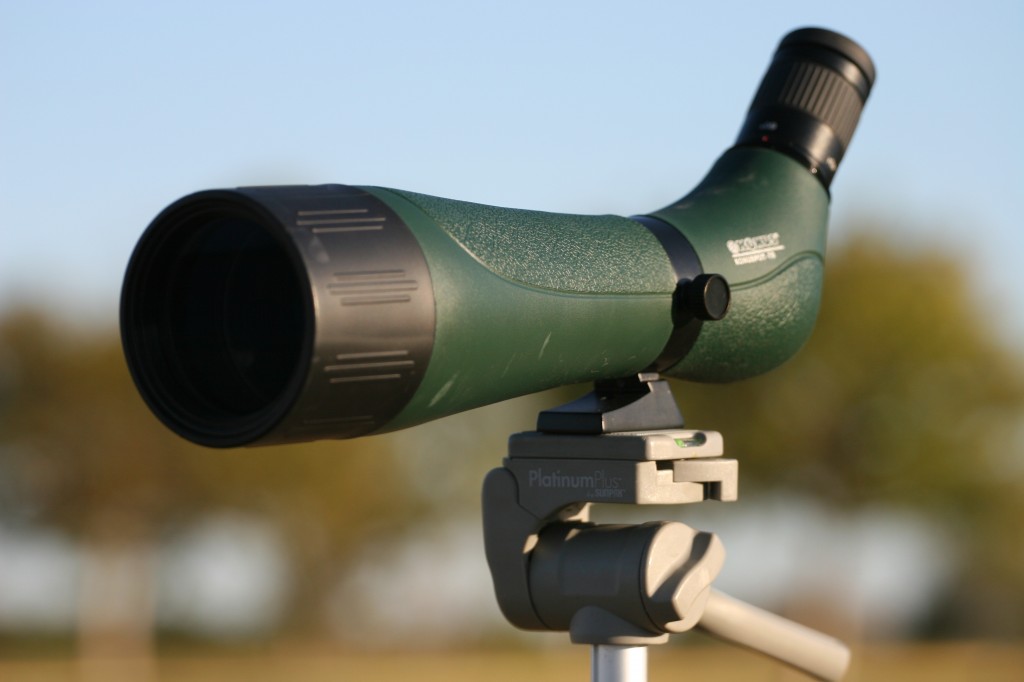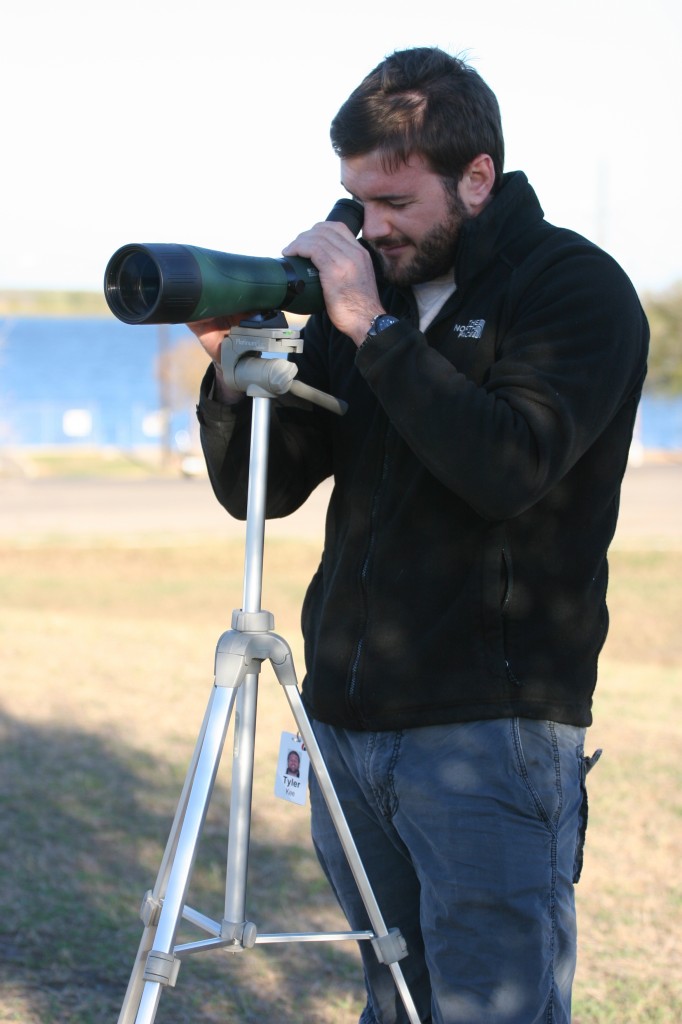I’m nearly blind without the help of corrective spectacles. I’ve been that way my entire life, and consider myself interested in optics more than your average American. I was never any good at shooting open sights as a kid, so I needed a scope to be on the same level as the other young boppers. Something about bringing far away objects within arm’s reach really appeals to me.
As such, it was quite a pleasure to pick up a big brown box filled with brand spanking new optics at the UPS depot. Konus Optical was kind enough to send me two spotting scopes and a riflescope for test and evaluation. I’ll admit that I was being a bit selfish when I asked for the spotting scopes. I was originally just supposed to test their riflescope. However, I’ve been making a few more trips to the long range lately, and hunting season’s coming up fast. A high quality spotting scope could make both a bit more pleasurable.
This particular review will focus on the KonusSpot 20-60X x 70 mm spotting scope. You’ll see a review for the 70’s older brother here soon, so stay tuned.
Fit and Finish
I found the 70 to be of very high quality. It has a semi-rubber coating that seems to fend off scrapes and dings. It does seem to attract dirt and dust, but a quick spray of Pledge and a clean rag can make that go away in a blink.
The scope has only two moving parts; the zoom for the eyepiece and the focus dial. I found the focus dial to be a bit awkward; it’s hard to manipulate with any sort of precision unless you can rest your elbow on something. On a large tripod, the 70 seems to be fairly well balanced.
On a small tripod like the one included, the big unit is a tad front-heavy. Be sure you stabilize the scope over a single leg lest you lose your brand new piece of glass over the front of your shooting bench. A big plus: the scope sports a nifty integrated sun shade that slides back and forth. No more parts to lose? Sign me up!
Clarity
I have taken the 70 with me on my last five or so trips to my indoor range with great results. On 60X, I have no problem picking out .22 sized holes at 100 yards. My range is particularly chintzy on lighting, so the 70 came in mighty handy.
Outdoors in full sunlight, this scope is a dream to use. Excellent clarity and focus from 10 yards and out to thousands. The 70 is quite enough scope for 1000-yard competitions, though, unless your targets happen to resemble animals and be made of steel. Picking out bullet holes at that range would be mighty tough.
Even with the sunshade, the 70 is quite susceptible to heat mirage. On a cold day, you could call shots at 1000 yards as long as there was a nice puff of dust or some other indicator.
Accessories Galore
Konus certainly doesn’t skimp when it came to goodies in the box. Your new scope comes with a fuzzy lined bag with fashionable strap, compact tripod, lens cleaning cloth, and camera adapter.
I didn’t get a chance to test the camera adapter other than to install it to check that it does indeed mate to the scope body. Once you have procured a T adapter for your particular camera, you can create what I imagine to be a very solid telephoto platform.
The compact tripod is a nice addition and works well for tabletop applications. It is not of high quality, but it gets the job done and I’ve had no issues in all my range trips with it.
Moving and Grooving
Having a “thing” that lets you see out to 1000 yards that you can sling over your shoulder and carry around all day is pretty great. If I were to go traipsing into the woods for some sort of weekend hunt, I would take the 70 without a second thought. Here’s what the 70 looks like in the paws of your friendly TTAG caveman.
Overall Rating
This has been a great scope to have in my arsenal. I’ve found myself “spotting” more and more because I have access to such a powerful, mobile optic. I think there are probably higher quality optics out there (better glass, better balance, etc.), but I would feel like I got my money’s worth if I were to purchase the 70.
Specifications: KonusSpot 20 – 60X x 70 mm Spotting Scope
- FOV at 1000 m: 35m@ 20X – 18.6m @ 60 X
- FOV at 1000 yds: 118ft @ 20x – 61.2ft @ 60X
- Exit Pupil: 23.5mm @ 20x – 7.43mm @ 60x
- Length: 450mm/17.7″
- Weight: 4.4 pounds
- MSRP $399.99 – Street value – $276.50 at Amazon








Good review Tyler. One of these days I’m going to have to pony up for a spotting scope because binoculars just don’t cut it.
Before you buy a spotting scope, here are some things to consider:
1) In optics, you get what you pay for. Build quality, design features, and optical quality. There is no such thing as a free lunch. If you are trying to see the holes from a .17HMR at 100 yards, a cheap spotter will not deliver the quality you need. So, buy something you want to keep forever, because its cheaper than replacing it several times over the years when it breaks.
When it comes to lens coatings, properly-designed and applied full multicoating outperforms a properly-applied single coating; but shoddily-applied multicoating (done solely to allow a scope to claim it is “multicoated”) can actually perform worse than a good single coating. The major manufacturers spent a lot of time researching and developing their coating materials and techniques, but no-name brands do not. Don’t fall victim to buzzword fever.
2) There are different eyepiece layouts. Some scopes offer straight-through viewing, others have the eyepiece angled up at 45-degrees. Trying to use a straight-through design while prone is a major hassle. Think about what positions you will be likely to use a scope in (prone, sitting, kneeling, standing) and whether you plan to have the scope on a tripod on the ground or on a little tripod on a shooting table, and buy a scope design that you can use from that position.
3) The numbers mean something, even the ones that aren’t magnification or lens size. “Exit pupil” is the size of the image you view when you look through the scope. Bigger image = easier to see. Scopes with a larger objective lens create larger exit pupils. But the exit pupil shrinks as the magnification increase. Don’t just buy power, buy power that you can actually use effectively. The longer the range, the more quality you need.
Another number not mentioned in this review is “eye relief”. That is the distance your eye needs to be from the viewfinder (ocular lens). Longer is better, especially for eyeglass wearers. Eye relief is usually longer on expensive scopes, because the calculations and workmanship to engineer it into the design aren’t cheap.
4) Waterproofing. If at all possible, buy a waterproof design, or at least one that is completely sealed and filled with nitrogen. You don’t need waterproofing because you will be dragging the scope behind you as you swim towards an objective with your Draeger rebreather on. But you do need it because moisture can get into a non-waterproof scope and cause (at the very least) fogging. Worse, the moisture inside can allow mold or fungus to grow on the lens coatings (some of which are organic chemicals). Those inside lenses aren’t easily cleaned like the outside surfaces are, and they aren’t exposed to UV radiation either. Yes, waterproofing costs more. But it beats ruining a hunting trip, and having to replace a scope.
That is a really nice spotting scope. Most I liked the superb focusing knob on the Konuspot-70 . The 70mm objective lens lets plenty of light into the scope, to make low-light or dawn/dusk viewing enjoyable. It absolutely worth it`s price.
Hunting is an amazing thing but hunting from a long range is really appreciable.
Comments are closed.